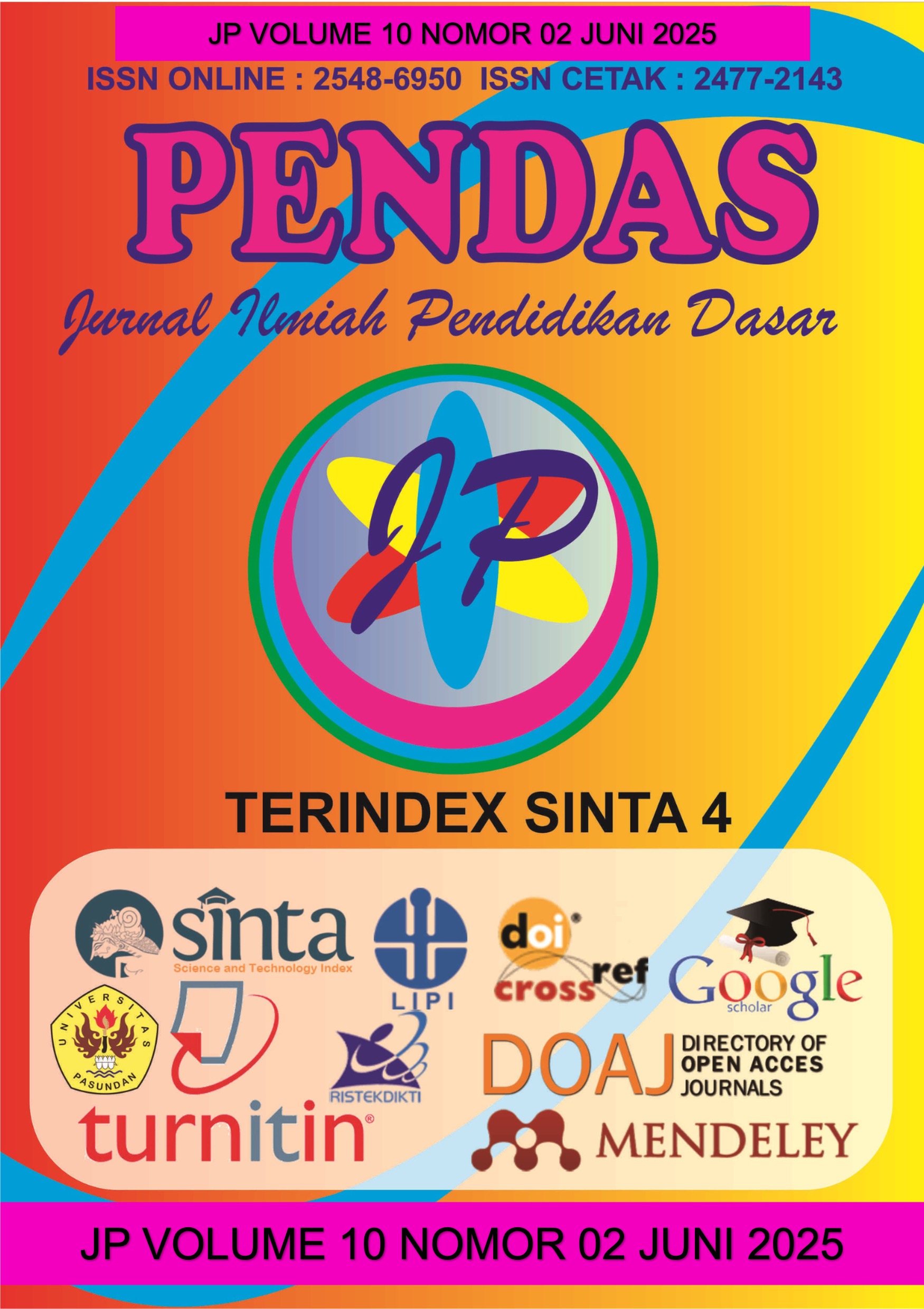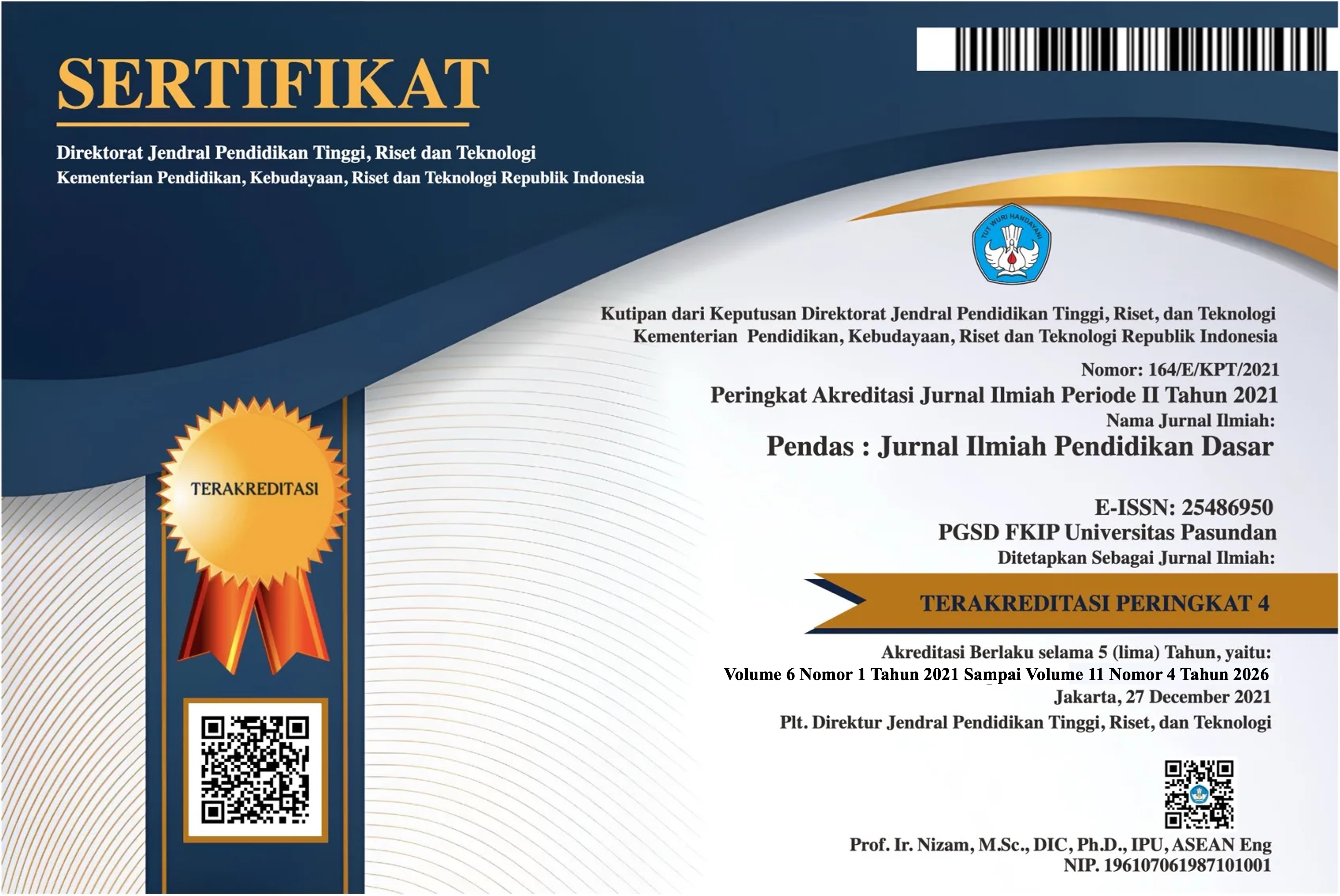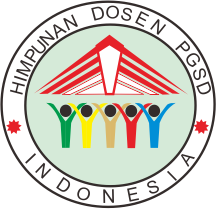PENGEMBANGAN LKPD BERBASIS ETNOMATIKA MENGGUNAKAN MODEL RME UNTUK MENINGKATKAN HASIL BELAJAR SISWA PADA PELAJARAN MATEMATIKA MATERI BANGUN DATAR DI KELAS IV SDN 060823
DOI:
https://doi.org/10.23969/jp.v10i02.29661Keywords:
LKPD, Etnomatics, Realistic Mathematics Education (RME), Learning Outcomes, Flat BuildingsAbstract
This study aims to develop an ethnomatics-based Student Worksheet (LKPD) using the Realistic Mathematics Education (RME) model to improve student learning outcomes in flat geometry material. The background of this study is the low student learning outcomes caused by the lack of use of contextual and interesting learning media. The research method used is Research and Development (R&D) with the ADDIE development model which includes the stages of Analysis, Design, Development, Implementation, and Evaluation. The subjects of this study were 25 fourth-grade students of SDN 060823. The instruments used included expert validation sheets, teacher and student response questionnaires, and learning outcome tests (pretest and posttest). The N-Gain result was 0.56 with a moderate category (good). The teacher and student responses to the LKPD were also very positive, with a very practical category. The increase in student learning outcomes was indicated by an average pretest score of 67.48 and a posttest of 87.84. The N- Gain calculation showed an average score of 0.56 which was included in the moderate category. Based on the research results, it can be concluded that LKPD based on ethnomatics with the RME approach is feasible to use, practical, and effective in improving student learning outcomes. The integration of local cultural values in mathematics learning has been proven to facilitate students' understanding of the material in a more contextual and meaningful way.Downloads
References
Lembar Kerja Peserta Didik IPA
Terpadu Berbasis Inkuiri
Terbimbing Terintegrasi
Pendidikan Karakter Melalui Four
Steps Teaching Material
Development. In Prosiding
Seminar Nasional Pendidikan,
5(2), 36–45.
Firmansyah, A., Kosim, K., and Ayub,
S. (2015). Pengaruh Model
Pembelajaran Berbasis Masalah
dengan Metode Eksperimen pada
Materi Cahaya Terhadap Hasil
Belajar Fisika Siswa Kelas VIII
SMPN 2 Gunungsari Tahun
Ajaran 2014/2015. Jurnal
Pendidikan Fisika Dan Teknologi,
1(3), 155–160.
Hidayat, E. I. F., Yandhari, I. A. V., and
Alamsyah, T. P. (2020).
Efektivitas Pendekatan Realistic
Mathematics Education (RME)
untuk meningkatkan kemampuan
pemahaman konsep matematika
siswa kelas V. Jurnal Ilmiah
Sekolah Dasar, 4(1), 106–113.
Isrok’atun, and Rosmala, A. (2021).
Model-Model Pembelajaran
Matematika. Jakarta: Bumi
Aksara.
Kurniawati, D., and Ekayanti, A.
(2020). Pentingnya berpikir kritis
dalam pembelajaran matematika.
PeTeKa, 3(2), 107–114.
Mutmainah, R., and Karlimah. (2024).
Model Realistic Mathematics
Education Dalam Pembelajaran
Matematika Di Sekolah Dasar.
Jurnal Penelitian Pendidikan,
24(1), 64–75.
Ningsih, S. (2014). Realistic
mathematics education: model
alternatif pembelajaran
matematika sekolah. Jurnal
Pendidikan Matematika, 73–94.
Pristiwanti, D., Badariah, B., Hidayat,
S., and Dewi, R. S. (2022).
Pengertian Pendidikan. Jurnal
Pendidikan Dan Konseling, 4(6),
7911–7915.
Rahmawati, L. H., and Wulandari, S.
S. (2020). Pengembangan
Lembar Kegiatan Peserta Didik
(LKPD) Berbasis Scientific
Approach Pada Mata Pelajaran
Administrasi Umum Semester
Genap Kelas X OTKP di SMK
Negeri 1 Jombang. Jurnal
Pendidikan Administrasi
Perkantoran (JPAP), 8(3), 504–
515.
Downloads
Published
Issue
Section
License
Copyright (c) 2025 Pendas : Jurnal Ilmiah Pendidikan Dasar

This work is licensed under a Creative Commons Attribution 4.0 International License.



















